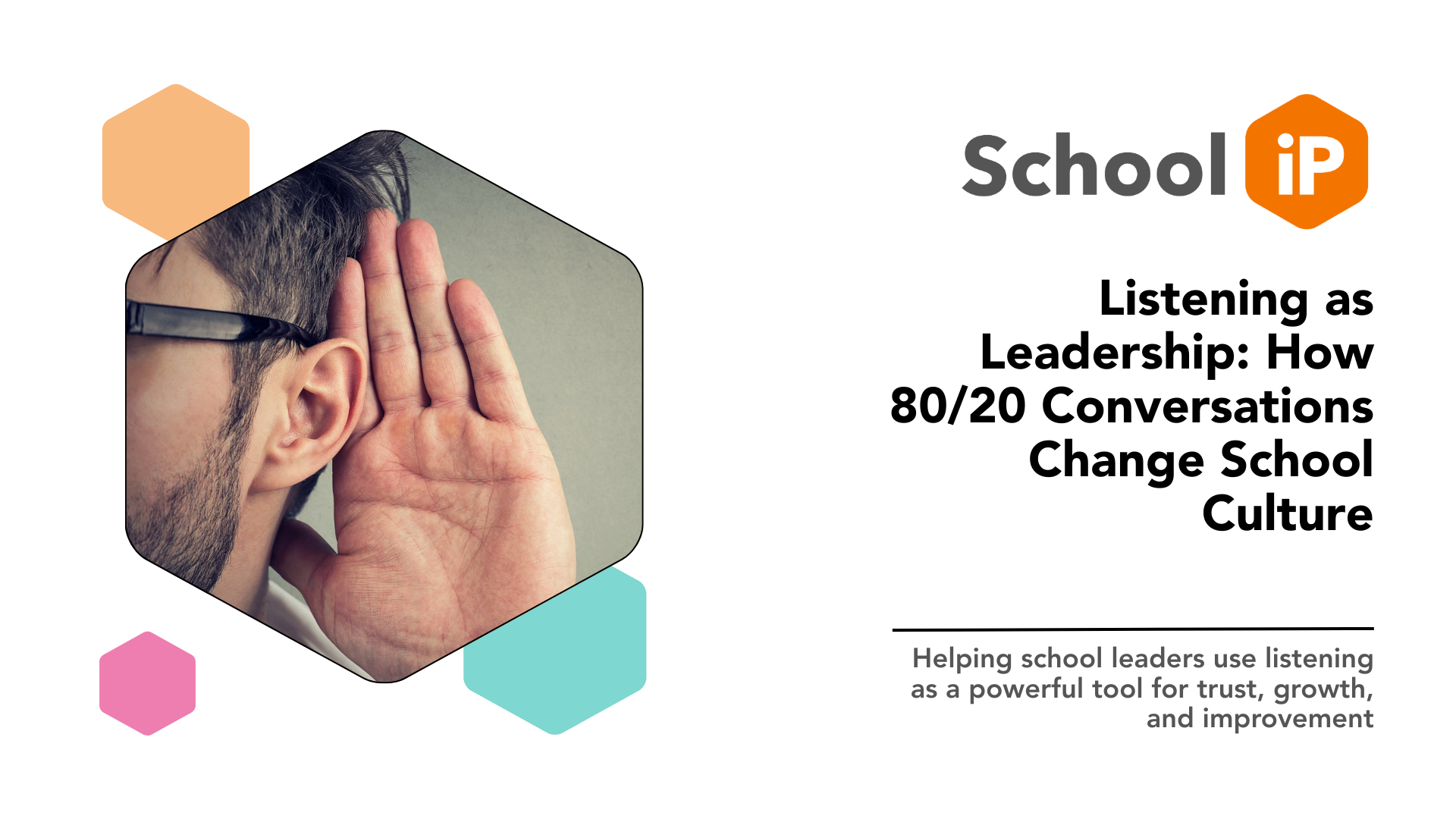Listening as Leadership: How 80/20 Conversations Change School Culture


We all think we’re good listeners. In education, especially, we assume that listening comes with the job, after all, we listen to students every day. But real, active listening is a leadership skill many of us think we use, when in reality, we often default to replying rather than understanding.
True listening, intentional, reflective, and non-judgmental, can transform not just one conversation, but the entire culture of a school.
Active listening means more than staying quiet while the other person speaks. It’s about being fully present. It’s about noticing not only the words, but the tone, pauses, and body language. It involves asking for clarification, summarising what you’ve heard, and holding back judgment.
Sue Atkinson, speaking in our recent SchooliP webinar, highlighted this clearly:
“We often listen to respond, not to understand. But when we shift our mindset and truly listen, without jumping in, we allow people to explore their thoughts and arrive at better solutions.”
This doesn’t just support individual staff. It creates a wider culture of trust, curiosity, and growth.
A powerful guideline for coaching conversations is the 80/20 rule:
80% listening
20% talking
In practice, this means giving space for the other person to think, speak, and reflect. Too often, we fill silences or steer conversations to our conclusions. But when leaders deliberately listen more than they speak, they create space for others to take ownership of their development.
This also applies to everyday conversations, not just formal reviews. Whether you're in a corridor chat, a subject meeting, or a behaviour debrief, pausing to really listen changes the tone and outcome.
How can you tell if someone is listening well? And how do you train yourself to improve? Here are a few signs and strategies to watch for:
Maintaining open body language
Matching your energy and tone to the situation
Holding eye contact without being intense
Allowing silence for thinking, not rushing to fill it
Summarising or paraphrasing what you’ve heard
Asking for clarification rather than assuming
Finishing someone’s sentences
Interrupting when the speaker pauses
Judging before understanding
Making it about you ("I know how you feel, that happened to me...")
Multitasking during the conversation
Asking “why” instead of “what” (which can feel accusatory)
These aren’t just good manners. They are critical tools for helping staff feel safe, supported, and professionally respected.
Listening isn't something you can always measure directly, but you can build it into your systems. SchooliP gives leaders the tools to support a listening-first culture through:
Coaching-style conversation templates in professional reviews
Space for staff reflections, capturing their voice and experience
Stakeholder feedback tools to monitor how staff feel about support and challenge
CPD logs and evidence uploads, encouraging staff to lead on their development
By making these processes transparent and consistent, SchooliP encourages more meaningful, respectful dialogue at every level of the school.
In a school setting, listening is one of the most important leadership tools you have. It costs nothing, but it builds everything: trust, clarity, morale, and improvement.
When leaders listen well, they don’t just hear concerns; they unlock solutions. When staff feel heard, they are more likely to take ownership, speak honestly, and improve with confidence.
If you want to change your school culture, start by saying less and listening more.